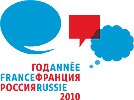|
André Raison (1650–1719) was a representative of baroque organ music, composing during the reign of Louis XIV. His legacy includes Deux livres d’orgue, published in 1688 and 1714. The first consists of five organ masses and an Offertory with the theme from the French song Vive le Roy.
In 1690 François Couperin (1668–1733), a young representative of the Couperin dynasty, wrote his first two masses for organ: “for parishes or secular churches” and for “convents of abbey churches”.
Among all his contemporaries, Louis Marchand (1669–1732) stands out for his particular drama and the inner expressiveness of his music. His art charms us with its skilful adornments and the detailed writing, and it shocks us with its unexpected imagistic contrasts. The composer’s stormy temperament and indomitable manner were embodied in one of his most famous works – Grand Dialogue en Ut, composed in 1696. This virtuoso concert piece with its unusual title has no analogy in other genre spheres or national schools.
The organist Nicolas de Grigny (1671–1703), who died young, occupies a special place among musicians of the “Grande époque”. His music stands out for its particular lyrical heartfelt conviction, its refined imagery and its melancholic intonations which can be heard in the most pompous pieces. Hiss Organ Mass (1699) is imbued with a deep grief for Christ on the cross, a prayer for salvation and a humble expectation of forgiveness. The imagistic structure of the mass as if looks into the era of romanticism and into Schumann’s aesthetics of Florestan and Eusebius. The peace born from a sad lyricism and subtle shading contrasts with heroics, where one can sense an inner expression of emotion. The specific nature of the organ timbres and dynamic changes to a great extent intensifies these sensations of “veiled” tension and “covert weariness”. Récit de Tierce en taille is the fourth part of the second section of the mass (Gloria). Performing it requires “languor, cadences, liveliness and movement”. In line with organ composition tradition, the names of the pieces in the mass corresponded either with the first line of the canticle or the register. |
The life of Michel Corrette (1707 to 1795) covered almost the entire 18th century. He was a contemporary of many remarkable people and historical events of the era. Have felt the shock of the Great French Bourgeois Revolution, towards the end of his life Corrette even composed his Symphonie pour orchestre sur le “Ça ira”. An author of countless treatises, a composer, a teacher and an organist, in his art Michel Corrette developed the idea of “acquired taste” proffered by François Couperin. This idea is connected to the unification of the French and Italian styles in one work. The list of the composer’s works is extremely significant. Many of them were published during the composer’s lifetime and have come down to us as “living” publications: Livre pour clavecin (1734), three Livres pour orgue (1737, 1750, 1756), Six Organ Concerti (1756), music for theatre, spiritual music and much more besides. Michel Corrette’s inestimable merit lies in the fact that he appeared as a successor of the French national tradition, which can be best seen in his music for organ.
The organ works of Felix Mendelssohn (1809–1847) formed part of a powerful course of the uninterrupted German organ tradition. From his young years, this composer-performer had been drawn by the music of Johann Sebastian Bach, of which he had a superb knowledge.
Niels Wilhelm Gade (1817-1890) was one of the first outstanding Scandinavian composers trained in the Leipzig school. A highly erudite and versatile musician (violinist, organist, conductor, teacher and director of a concert society), Gade was the head of the Scandinavian school of composition. He is also famous for taking part in the establishment of Denmark’s first conservatoire and was its director until his death. As a national composer, Gade became prominent in 1840. That was when his overture Efterklange af Ossian (Memories of Ossian) won first prize at a composition competition in Leipzig. From the start of the 19th century, Danish musicians began to show greater interest in studying the nation’s folklore. Under the influence of his teacher Andreas Peter Berggren, a composer and folklorist who had published a series of albums and anthologies of folk songs and melodies, Gade turned to the national element in music. It was he who first introduced a flavour of northern Scandinavian motifs in European music. His work refers, on one hand, to national folklore and, on the other, to the traditions of European romantic music – first and foremost of Germany. A church organist at one time, Gade composed several pieces for the instrument. Three Tone Pieces for Organ, Op. 22 (1851) are among the best images of his chamber music.
Gunnar Idenstam (1961) is a highly acclaimed organist of the present day who received a classical education in France. Gunnar Idenstam’s performing repertoire is incredibly broad and ranges from classical “antiquity” to “non-traditional” modernity. But his own musical experiments in the field of composing and arranging music are particularly attractive and interesting. In the spirit of modern tradition, Gunnar Idenstam creates transpositions of symphony works for organ, composing highly inventive works. National anthems formed the source of the composer-performer’s artistic inspiration. His interest in folklore transpired in his transcriptions of Swedish folk melodies for organ. The composer himself believes that folk music tells him new ways of grasping the art of classical organ music – greater freedom of rhythm and improvised ornamentation, and a more subtly feeling of the energy of dance: “Swedish folklore itself was born from the baroque, it is the key to my Bach-like heart.” Anna Kolenkova |
| As part of the Year of Russia and France 2010 |  | ||
In co-operation with |
|
